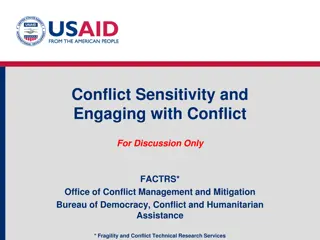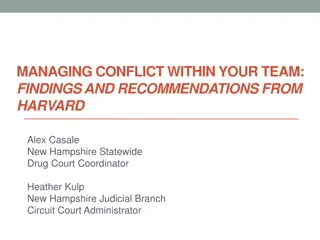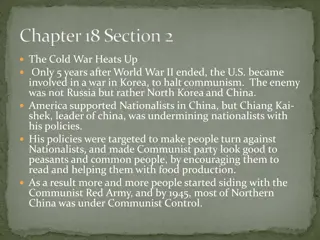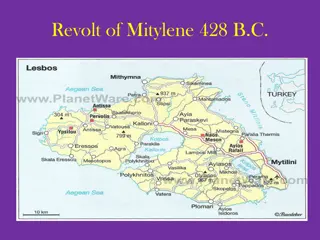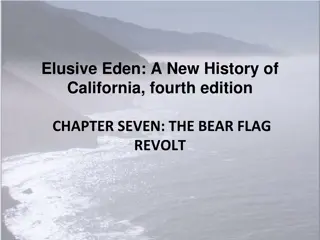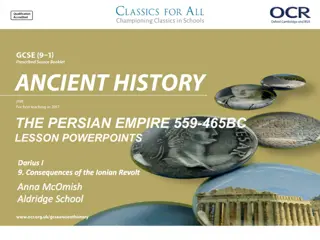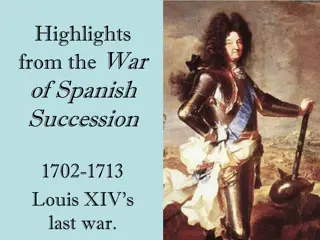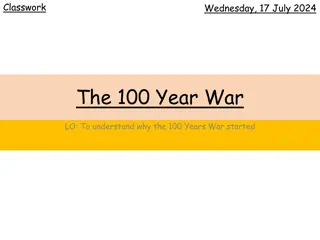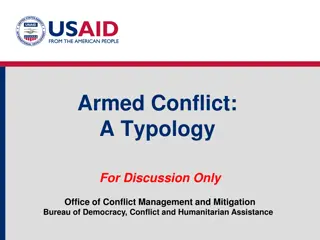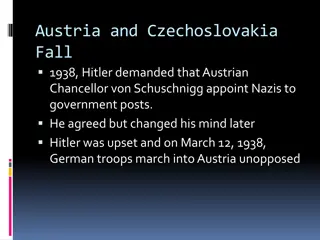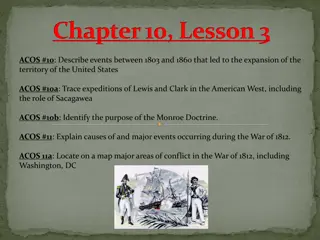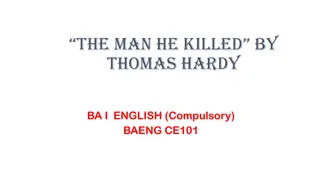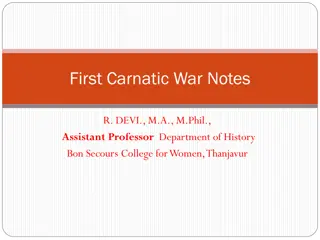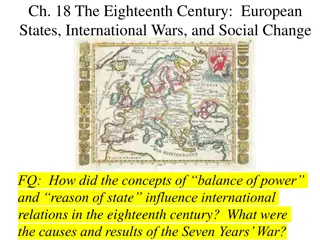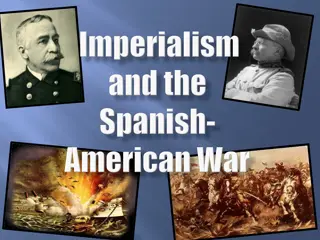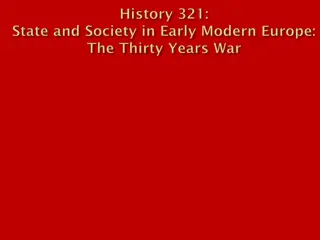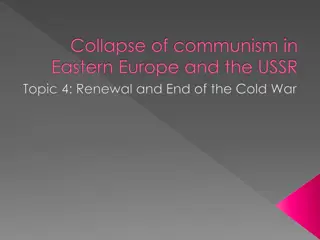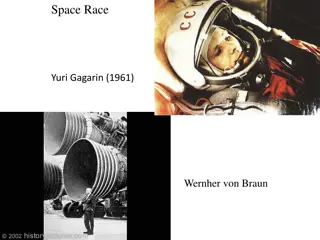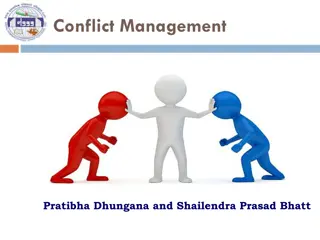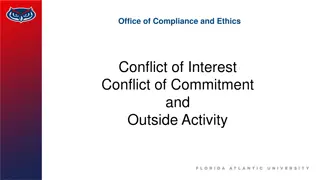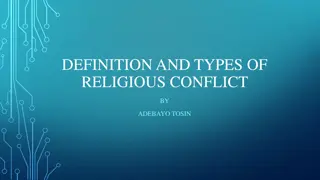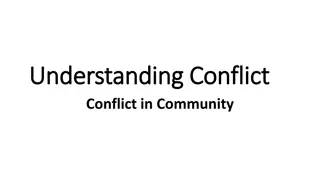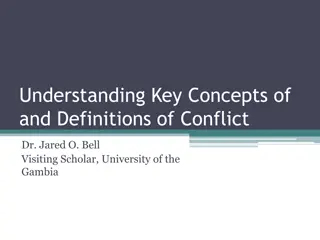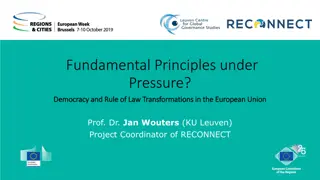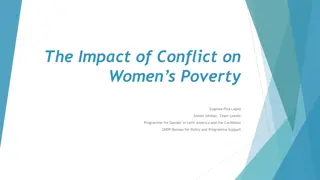The Thirty Years War: Bohemian Revolt and European Conflict
The Thirty Years War began as a clash over political and religious issues with the Bohemian Revolt in 1618. Despite initial intentions for limited involvement, major powers were drawn into a prolonged conflict lasting three decades. The war involved various factions, including Protestant assemblies, the Habsburgs, Spain, Saxony, and the Ottoman Empire. It saw battles such as the Siege of Royalist Centers and the Battle of White Mountain, resulting in significant territorial changes and strategic moves. The rebellion faced disorganization, lack of foreign support, and relied heavily on religion as a unifying factor.
Download Presentation

Please find below an Image/Link to download the presentation.
The content on the website is provided AS IS for your information and personal use only. It may not be sold, licensed, or shared on other websites without obtaining consent from the author. Download presentation by click this link. If you encounter any issues during the download, it is possible that the publisher has removed the file from their server.
E N D
Presentation Transcript
What sort of war was the Thirty Years War when it began? The Bohemian Revolt was the first serious clash over the political and religious issues facing the Empire. Europe was not poised for war in 1618, as all the major powers remained afflicted by their own problems. Few intended their involvement to lead to a major war, and no one thought of a conflict lasting thirty years (p. 269).
an aristocratic coup led by a minority of desperate militant Protestants (p. 269) divided Defensors applying the Letter of Majesty Count Jindrich Matyas Thurn (1567-1640) Protestant assembly Defensors vs. Regents the fateful day: 23 May 1618
Protestant assembly diet Directors Count Georg Friedrich von Hohenlohe Habsburg reaction demise of Klesl mobilization Charles Bonaventure de Longueval, Count of Bucquoy
Habsburgs Spain Saxony M hlhausen Declaration (20 March 1620) Poland: Cossacks: the kind of cavalry that God would not want and the Devil was afraid of (p. 292) Bavaria and the Catholic League Treaty of Munich (8 October 1619) General Jean Tserclaes Tilly
Bohemia / Bohemian Confederation election and coronation of Frederick V (1619) Protestant Union Moravia Hungary Austrian Protestants Britain Bethlen G bor (Transylvania) + Ottomans? + Hungary
Rebel tactics siege of royalist centres in Bohemia invasion of Austria: attempt on Vienna (1618, 1619) Habsburg response defend Vienna recover Upper and Lower Austria secure frontier with Upper Palatinate (Bavaria) invade Lower (=Rhenish) Palatinate (Spain) invade Lusatia (Saxony)
Battle of White Mountain, 8 November 1620 fall of Prague submission of Moravia to Ferdinand II surrender of Lusatia and Silesia to Johann Georg
disorganization bad reputation of rebellion no foreign support except from Bethlen importance of religion as rallying force a fixed social base: aristocracy a fading version of aristocratic corporatism vs. a more centralized state (p. 310) influence of court patronage state service The Habsburgs decision to make Catholicism the touchstone of political loyalty gave centralization a confessional character, though there was nothing specifically Catholic about it (pp. 310-11).
Lack of heavy artillery in attacks on Vienna: June 1619 (p. 280), November 1619 (p. 291) the full horrors of war (p. 301) epidemic cruelty (p. 302)
Frederick V: Winter King in exile exit the generals and officers Anhalt, Hohenlohe demise of the Protestant Union (1621) end of the Twelve Years Truce (1621) Dutch Republic and Spain: limited and strategic interest in the Holy Roman Empire response of Protestant monarchies: Denmark, England pacification of Bethlen G bor (pp. 324-25)
Count Ernst von Mansfeld Landgrave Moritz of Hessen Kassel Margrave Georg Friedrich of Baden-Durlach Magnus of W rttemberg others like Magnus Christian of Brunswick- Wolfenb ttel trade of war (p. 330)
Hessen-Kassel http://upload.wikimedia.org/wikipedia/commons/7/7c/ HRR_1789_Landgrafschaft_Hessen-Kassel.png Baden-Durlach http://upload.wikimedia.org/wikipedia/commons/e/ea/ Markgrafschaft_Baden-Durlach.png W rttemberg http://www.pantel- web.de/bw_mirror/history/bwmaps/bw_316.jpg The Duchy of W rttemberg is yellow, Electoral Palatinate is green, free imperial cities are pink, lands belonging to prince bishoprics are dark purple. Duchy of Braunschweig-Wolfenb ttel http://de.wikipedia.org/w/index.php?title=Datei:Herzogtum_B raunschweig_1789.png&filetimestamp=20090428162152
Bavarias invasion of Upper Palatinate, 1621 Battle of Wimpfen, 1622 Battle of H chst, 1622 Mansfeld s invasion of East Frisia, 1622 Battle of Stadtlohn, 1623 re-emergence of Bethlen G bor, 1623-1624 Hungary in Habsburg hands Archduke Ferdinand, King of Hungary, 1625
The significance of the victories of 1620-3 lay not in sweeping constitutional or institutional changes, but in the redistribution of power and wealth to the emperor s supporters (p. 348). Bohemia a hereditary monarchy Estates remain but with restrictions. Their powers now rested on dynastic grace, not inalienable corporate rights (349). revocation of the Letter of Majesty removal of chancellery to Vienna
chancellor and vice-chancellor The victories after 1620 enabled Ferdinand to extend his existing patronage to the rest of the Empire. By redistributing conquered land, he undermined the opposition s economic base while strengthening his supporters (p. 350). an improvised, not a coherent, strategy
Blood Court 28 executions in Prague: 21 June 1621 undoubtedly unnecessary and a mistake (p. 352) Land Transfers the largest transfer of property in Europe before the seizures during the Communist takeover after 1945 (p. 353) confiscation of land: the standard penalty for rebellion state power and the reordering of personal relationships (p. 354) concentration of landed wealth among a small group of Ferdinand s supporters
the fate of the Palatinate rewards for Maximilian I: 1. the Upper Palatinate 2. part of the eastern Lower Palatinate 3. electoral title Maximilian remained bound to Ferdinand whose help he needed to secure wider recognition of his new status (p. 356). eleven new princes (1624) Ferdinand s programme worked by changing people, not institutions, brining loyalists to the fore and marginalizing opponents (p. 357).
the formation of a solidly Catholic political and social elite (p. 357) Nobles became Catholic. Some did so opportunistically. Rebels lost religious and political rights and property. re-catholicization similar to Munich plan (1579) Catholicism a prerequisite for citizenship in towns Protestant exiles advantages / disadvantages The Palatine and Bohemian causes, both defeated, lived on as justification for Danish and Swedish intervention (p. 361).




